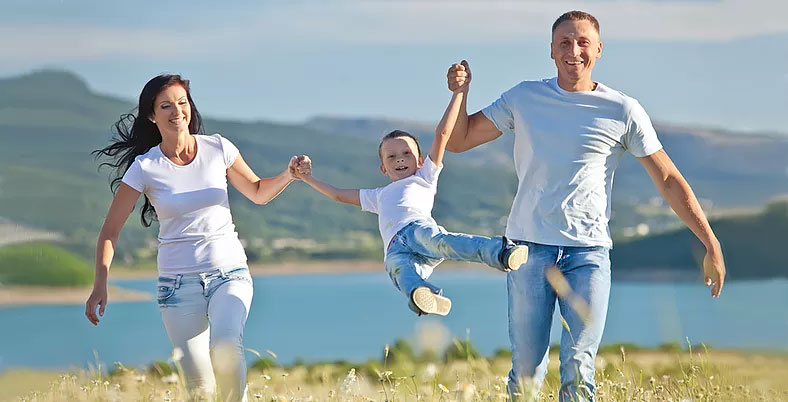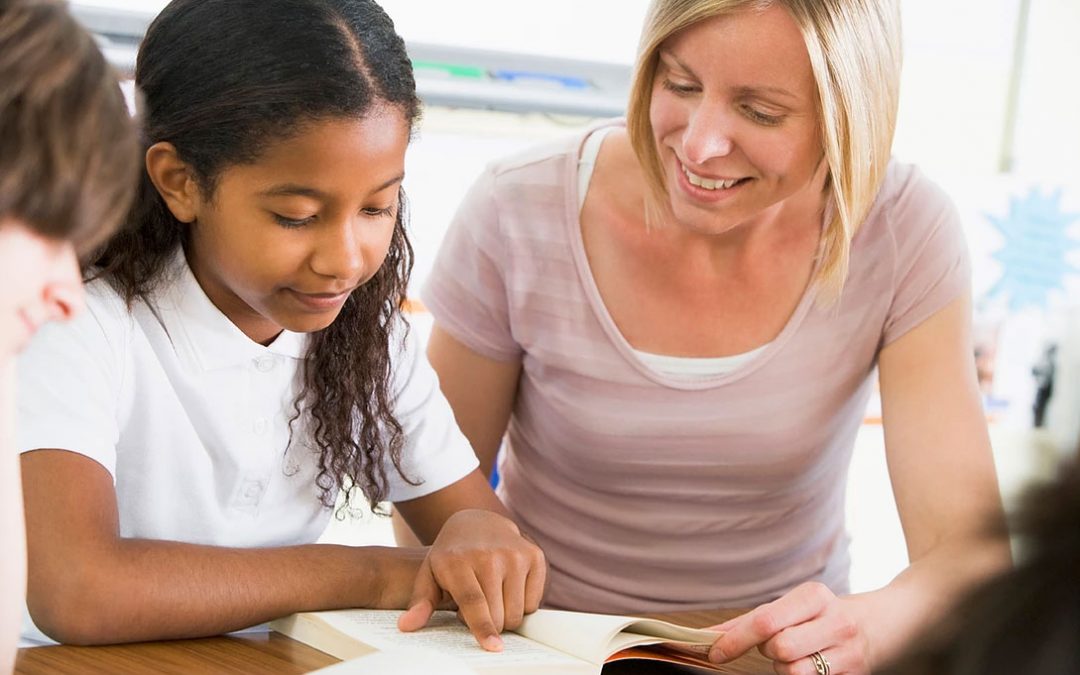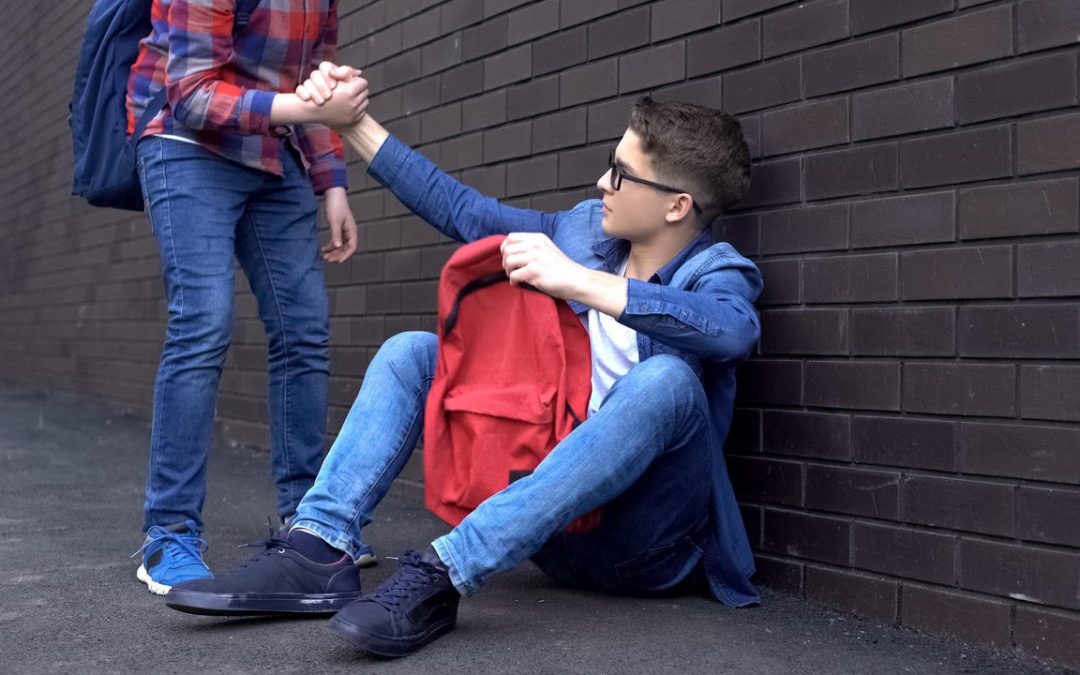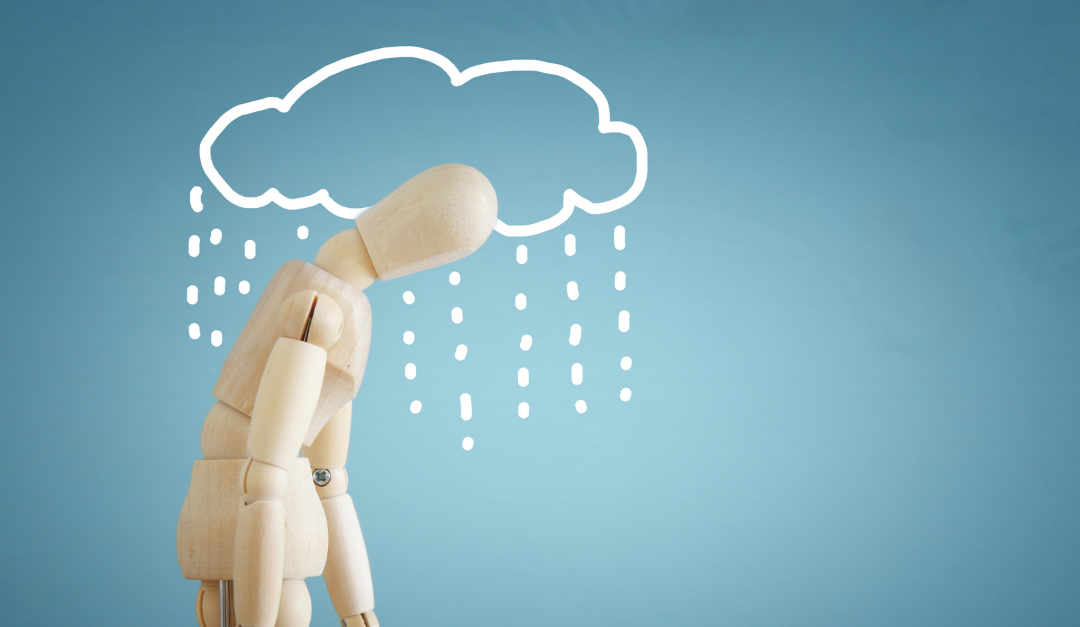
by Maurizio Vespa | Nov 22, 2018 | Health & Wellbeing
I am sure we have all read and heard about a child’s FIGHT, FLIGHT and FREEZE responses. However, we do not hear as much being discussed about how we continue to experience these behaviours into our adult years.
In the late 1960’s, Dr Silvan Tomkins shared his “Affect Theory” research with the world. For those who may not be aware, we all poses an “Affect System” that gets triggered when the spotlight is placed on us, so allow me to briefly share an insight into what is our “Affect System”, and the connection with Fight, Flight and Freeze modalities.
The “Affect System” is triggered when a person is stimulated by something that is received via the senses. The stimulus can be positive, negative or a neutral one. However, once our affect system is aroused, we may respond positively, which may give rise to pleasure or fun, in a negative way, which may stir up shame or anger and in a neutral way, which may show itself in the form of a shock or a startle. The shock and startle response, is a brief pause in time where it is hard to think or make sense of things. It lasts a few seconds generally until cognition is regained.
The “Affect System” when triggered creates a physiological change in the human body, such as a smile, rolling of the eyes, blushing etc. This is also accompanied by a feeling and when the two interact, we feel an emotion, like anger, fear, joy, excitement or just uncertainty.
This “Affect System” is interconnected to our FIGHT, FLIGHT, and FREEZE behaviour.
When a child is placed in the spotlight for having done something wrong, their “affect system” gets triggered. They will feel uncomfortable, and yet smile, or turn their heads, eyes and look away etc. (their physiological response). However, the adult will usually respond by saying ” look at me” or “you need to take this seriously, so stop smiling”.
If the child feels that their relationship with the adult is not a safe and positive one, the child may engage in a “Power Battle” with the adult. That is, the child will argue, deny, or participate in a blame game. This is the “FIGHT” response of the child.
The adult can also goes into FIGHT mode, especially when they believe they are losing control and power, so to regain the upper hand, the adult usually reverts to their “safety mode” and takes up a position of “Power Over”, by raising their voice, or implementing a punitive intervention. However, it is quite common for adults before they go into Fight mode to experience the FREEZE!!!!
The Freeze response may not be as obvious to some but it happens when the adult is confronted with a situation that requires management, and for a moment are uncertain how to deal with it. There is often some internal thinking that takes place for them. Used wisely, it can be of benefit to all but when rushed, it can have damaging outcomes. For instance, if a child says something rude and offensive to the adult, the adult is shocked, “FREEZES”, gets angry and the emotional energy surges quickly, so that the response is a statement that is intimidating, and aggressive. It may even contain judgemental, and stigmatising language. Then it is followed by a punitive action because it helps the adult feel as though they have regained the Power status back to the “FIGHT” response.
The “Freeze” response can be useful to the adult, when managed effectively. If the adult is uncertain about what to do, take that moment to reflect, a statement can be delivered with honesty and dignity that addresses the affect of the comment on the person. Then redirect the child onto something else and find the time later to address it properly. Once the adult has had the time to think about what needs to happen and reflects calmly on a way of managing the situation with the child being allowed to do the same, the prospect of coming up with a more positive outcome is enhanced.
For the child, the FREEZE response will take the form of silence or denial and reluctance to engage. This will often enrage and frustrate the adult. Again, take the time to be “with” and “in the silence” and to think of a statement that will disapprove of what has happened or the behaviour and move on to something else, so that the and space time can be used to reflect and address the situation with clarity.
The “FLIGHT” mode for a child can be instantaneous, especially if the child is fearful of what is going to happen to them. They will often run when they feel guilty and when they know that they have done something hurtful. The child may run when they do not have a great relationship with the adult. The feeling of not being safe or in a safe place with the adult can trigger “FLIGHT” responses from children. So, the first thing is not to run after them, let them settle and calm down, then find the best time to interact with them. Again, use language that is respectful, and a tone that feels safe, calming and yet assertive. For the adult the “FLIGHT” response can be to pass the problem onto someone else, which tends to happen in schools and in the home. In the home, one parent passes the problem onto the other. Neither of these behaviours are helpful because it disempowers one and makes the other responsible. The same applies in schools when one teacher refers the problem onto another. Sadly, that person experiences ,the damed if they do, and damed if they don’t reactions.
While, FLIGHT, FIGHT and FREEZE modalities are a natural part of human behaviour, being aware of these in our actions and responses can help us to manage situations more effectively when we see it being played out in children or other adults.

by Maurizio Vespa | Oct 25, 2018 | Family
If we were to reflect on our parenting behaviour when our children were babies and totally dependent on us, we may notice that an enormous amount of time is devoted to comforting, nurturing, feeding and talking to them. While our children are dependent on us, they get a great deal of attention, stimulation and nurturing.
Studies in human brain development show, that a baby’s brain, develops in tandem with adults. Our emotional connectedness with our children actually assists their brain development. However, as our children get older and become more independent for some of their basic needs, the intensity of the one on one time to teach children can drop off.
It is possible for parents to become complacent and heavily dependent on other social groups and networks to impart important skills and knowledge. Place greater responsibilities on school communities for example to take up the role of responsible adult role modelling and social learning.
In reality, as our children get older, approach and experience adolescence they need more quality time, wisdom and the explicit sharing of a parents knowledge of their child’s strengths and qualities.
The time of growing up for our children should be a time of ongoing educational relationship between the child and parent. As a parent, it is my role to seek special moments when we can sit and talk about important issues impacting on the life of my child. Together we can talk about how these issues could be managed and solved. Whilst, in conversation with my child, we talk about the choices we can make and which would be most appropriate for the situation. These conversations help us to teach and guide our children about how to make choices and to choose what is right. It is a wonderful way of building self-esteem and resiliency and it helps to build a trusting an honest parent and child relationship.


by Maurizio Vespa | Apr 25, 2018 | Education
When I completed my high school studies, I wanted to get into acting or take up electrical engineering and instead I fell into teaching. Quite a logical thing to do!!!!
My parents even advised me to rethink my career in teaching.
Teaching was never a profession I had envisaged taking up. However, I am so glad I did, because it directly contributed to the person I am today.
So, did I have what it takes to be an effective teacher? YES… I believe so… and was I good at teaching? YES… I was. Did it come naturally for me? NO…. it did not. Did I have to work hard? YOU BET I DID.
The hours preparing lessons went on for years. Even after 20 years, I was still writing lesson plans and preparing a variety of activities to ensure that students were engaged in learning. There was always that spare activity up my sleeve, in case things backfired, which happened many times.
It is unrealistic to think that we can always be in total control of the classroom, however, we are in a far better mindset, when we believe that we have the capability to manage situations when required.
Anyway, the reason for this blog, is to share some tips on managing the classroom environment. Like clothing that is passed on from one sibling to another, I would like to pass these ideas from great teachers who shared and taught me. There are strategies that I was taught when I completed my Diploma in Teaching and others I picked up from reading about Choice Theory by Dr William Glasser, and Human behaviour by Dr Rudolf Dreikus, plus Cornwell University’s, Therapeutic Crisis de-escalating Intervention strategies. Of course, the best strategies came from observing teachers and colleagues while at work.
1. Move around the classroom while teaching
When I was in my very first teaching practicum at a school in Western Sydney, my supervising teacher made comments about a variety of skills that I had demonstrated during the lesson. One comment stuck in my mind. It was a comment referring to how I moved around the room while instructing and engaging students. It is easy to stand out the front and lecture or hide behind a desk or bench but when you move around the class, one can easily see what students are doing and it makes it easy to manage behaviour, while at the same time share information, plus ask and respond to questions.
2. Plan for the unexpected and the Student/s who may pose a challenge
The unexpected can happen in any classroom and over the 20 or so years, I have experienced way too many to recall. However, what I found useful was, when planning a lesson, not only did I focus on what I was going to teach, and how, as in the type of activities would I use, I would plan for how many and how long would each activity last and most importantly planning for the students that I had in my class. Within each lesson plan, I would be thinking of the students in my class and what activities best suited their learning styles, allowed them to be successful and focused.
The reason for this is because sometimes a child’s behaviour is communicating that the work is too boring not challenging enough!!! or that it’s too difficult and so they feel inadequate and do what they can to avoid doing the work. Hence, they will be distracted and try to distract others. Ultimately, the student hopes that you will do something to put them out of their discomfort. Usually, it results in isolation in or outside of the classroom and maybe outside the office of a senior teacher. An outcome, which the student was hoping for, to get out of doing challenging work. Therefore, let’s for moment reflect on who is in control in this situation. If the student is seeking to be removed, is it the teacher or the student in control. Who really gets what they want?
3. Prompts can be very helpful to the teacher
As a teacher we tend to do a great deal of talking. It is valuable to stop ourself from scolding and lecturing and I learnt that some situations can be managed without having to say to much. In fact, you do not have to say anything to manage and prevent situations from escalating. As a student in the classroom, the teacher I admired the most often said very little when correcting or redirecting students back to the task. They would often look at you, nod their head with approval or disapproval, sometimes raising their index finger up to their mouth to indicate that silence was required or pointing to their ear to suggested that I needed to listen, and it was very effective. So, these non-verbal prompts can be so useful in a classroom.
4. A caring comment goes a long way
If a student senses that the teacher does not like them you have a tough job ahead of you. Hence, it is easy to be distracted by misbehaviour, to single a student out and to be convinced that there is no way of getting through to a child. However, it is possible to shift this negative thinking by looking for moments when that child can be acknowledged for their effort or positive behaviours. Genuine and caring comments can help to rebuild learning relationships and contribute to positive student behaviours. Comments like, 1. “You expressed your ideas and thoughts honestly and clearly in the writing task I gave you”, 2. “You managed to complete some difficult questions without seeking help today” and 3. “Your contribution is class was really appreciated”, 4. “I noticed were were not at school yesterday, I hope you are feeling better today”.
5. Collaborative help or hurdle help
The art of teaching involves explaining difficult concepts, showing students how to do things and then to practice a few times using a variety of activities to reinforce the concepts. Some students catch on easily, while others can still find it hard.
It is a common experience for teachers that when tasks are set for the class, there is always one or two students who find it difficult to commence. When they look at what they must do, and see others at work, they become anxious, possibly distracted and unable to start. The hurdle help approach is useful in the situation. The role of the teacher is to approach the student, sit with them and ask which question could they do together. Once you have collaborated with the student, the teacher instructs the student to select one question that they can attempt and let them know that you will come back to check it with them. This technique allows the teacher to monitor the students’ progress and to keep them on task. It is useful to ask the student, if there is a peer with whom they would like to sit with who can help when things get difficult.
6. Redirecting a student’s attention and using silence
When I did my first acting class, I was taught about the importance of speaking clearly and to be aware of my vocal tones or tonality. For teachers’ the tone of their voice is important to teaching. If a student is off task it is helpful to redirect that student and to do it in an authoritative and respectful way. Using statements such as 1. “May I remind the class, that this task will continue for ten more minutes, then I will invite students to share their answers”, or 2. “Please, keep in mind our class agreement about noise” and 3. “If a question is too difficult, move onto the next one”. 4.” If you have finished the task, use the link I provided you and explore the next task”. These are examples of redirecting statements that may assist with student management.
Another practice I found useful, is to ask the class for their attention in a respectful and assertive tone, then wait in silence for the students to calm themselves down. It may take time at first but eventually students will work with you. Especially when they appreciate the respectful way in which you seek their attention without having to single out students. Silence and waiting is very effective.
7. Using Proximity during lessons
In a previous point, I mentioned the importance of moving around the classroom during a lesson. Well proximity is a strategy that works well with movement and it has an immediate effect. These days most of my work is Professional Development workshops for adults. I like to use technology in the workshops as it saves paper and allows me to incorporate a variety of internet tools as part of the activities. However, adults like students, go off task, so when I move around the room sharing information, sometimes I stop at a table and immediately that person closest to me stops doing what they were doing. The same applies in our classroom. If a student is off task and being distracting, simply by moving and standing next to the student stops the behaviour. It does not draw attention to the student especially if you use your presences without commenting, scolding or lecturing the student.
8. Provide positive attention and ignore the negative
I would often explain to my students that they may observe times when I may not correct and single out a student but instead I may redirect the class to our classroom agreement. However, my ignoring the student’s behaviour does not mean that I will let it pass. I would explain to the class that rather than draw attention to that student, I will follow it up privately with them. However, in the meantime, I would refer the class to the attitudes and behaviours we had agreed to support and practise. Hence, if a student was distracting others I would ignore the negative behaviour but seek to get them back on task by focusing on a positive action. An example of the comments I may make are; 1. “I noticed that you are well prepared for working on the task I set”, 2. “Having a discussion with the person next to you may be helpful to both of you”, 3. “You seem to have everything in readiness to start this task, do you need my help”? If one encounters a student who feels that they are singled out more than others, this type on intervention, helps to de-escalate the situation.
9. Using directive statements
When students are working on an activity to keep students on task it may be necessary to direct a student’s attention to what is required of them, the amount of time they have and the impact if the tasks is not completed. Hence, directive statements raise awareness and is aimed at refocusing the student’s attention. Here are some examples; 1. “I am going to give you five extra minutes to finish off this task”, 2. It may be necessary to complete this task as part of your homework”, 3.” I will need to check what you have worked on before you leave this lesson” 4. “In 10 minutes, I will need you to show me what you have accomplished so that I can give you feedback”.
These suggested strategies are organised in no particular order but they can easily be used in combination with others. If at first, they do not have the impact that you desire, it does not mean than they have failed, try another and come back to it again.







Recent Comments